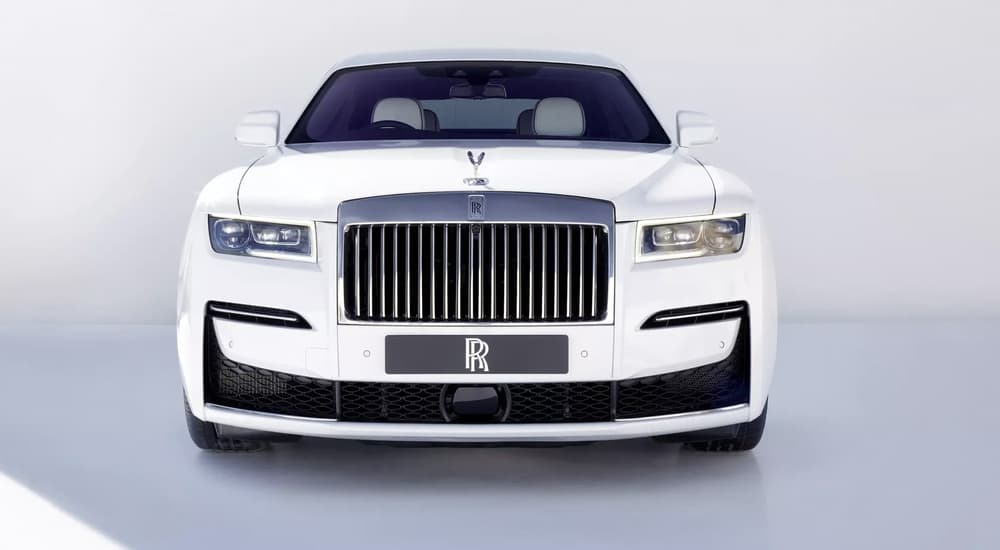As you’re shopping for a car, technology is probably one of the top things you’ll look at while narrowing down your options to pick the right vehicle. Statistically, based on surveys at least, luxury and comfort tech––like heated seats––are among those things that car-buyers look for first and foremost. That makes sense; after all, you’re going to spend most of your time with your car actually driving it, and you want that to be an enjoyable and comfortable experience. Modern technology has made driving easier, more comfortable, and more interactive than ever before, with a wide range of impressive features from numerous manufacturers.
Not every innovation or concept is a winner, however, and there have been a fair number of technological ideas and experiments that were less-than-great. Most of these never made it to a dealership or only lasted a short time before being cast upon the scrap heap of automotive history. While you won’t find these when you’re shopping for your next vehicle, they’re a great reminder that not every new concept is worth embracing. That’s okay though––new innovations often require going the wrong way first and then circling around to a good idea.
Rolls-Royce Ghost – Noise-Reduction Taken Too Far
Honestly, of all the strange innovations I’ve seen in the auto industry, this is probably my favorite because it’s a case of when a good idea goes too far. You’ll find noise-reduction technology on plenty of vehicles, designed to provide you with a quieter ride. In fact, numerous parts of your car––including things like the muffler and exhaust system––are designed to keep your drive from being horrendously loud. But what happens when that’s pushed to the limit?
We nearly found out with the second generation of the Rolls-Royce Ghost, an exquisite luxury vehicle with one of the most beautiful interiors you’ll ever see. The engineers working on the updated Ghost wanted to make the interior quiet, incredibly quiet, and so they really went all-in on this effort. They used an aluminum frame, double soundproofed the interior with a “sound-deafening skin,” modified the windshield wipers, double-glazed the windows, and even included more than 200 lbs of sound-insulating material. The end result was the quietest interior imaginable––in fact, it was too quiet.
According to the team and lead engineer working on it, the result was so quiet that it became unsettling at first, then disorienting, and ultimately made drivers feel nauseous. If this sounds bizarre, then let me introduce you to the anechoic chamber. The anechoic chamber is the quietest place on earth, so quiet that no one has ever been able to remain in the room for more than 45 minutes. The inside of an anechoic chamber can be so silent that the background sound is measured in negative decibels; you hear your heartbeat, your lungs breathing, and you become disoriented and start to hallucinate. Sadly, the Ghost wasn’t quite that quiet, but there’s always room for improvement…
Ford Nucleon – AKA the “Mr. Fusion”
While a car that makes drivers nauseous isn’t a great idea (though as a kid, that was literally every car I ever sat in, especially for long road trips, so I wouldn’t have noticed the difference), a car that’s powered by a virtually limitless power supply seems like a great idea. This was probably what the engineers at Ford were thinking when they started working on the Nucleon, a car that would’ve harnessed the power of the atom and used nuclear fusion. It was a concept car created in 1958 by Ford Motor Company, and it would’ve had a nuclear reactor installed in the rear as the powertrain.
This idea never came to fruition in part, I imagine, because a compact nuclear reactor that can fit onto a still car doesn’t exist almost 70 years later. If the technology ever catches up with the idea, then I’m sure we’ll get it, and we’ll all be able to power our vehicles with garbage or anything else we have handy. Until then, our flying DeLoreans will just have to use more-conventional power supplies.
Sinclair C5 – There’s Such a Thing as Too Compact
Ever think to yourself, “I really wish I had a battery-powered tricycle?” Well, if so, then you should try to track down a Sinclair C5 because that’s essentially what it was. It was a single-person motorized tricycle, or “trike” if you’re cool, that was battery powered and described as a “vehicle, not a car.” One look is enough to prove that such a description was entirely accurate.
Conceptually, it’s not awful, but the execution was rough––no surprise considering it was made in 1985. The C5 had a top speed of 15 MPH and only about 20 miles of range from a full charge––impressive for the time, since there wasn’t Tesla or anything else to really compare it to, but hardly enough for city driving. It was marketed as an alternative to bicycles, not cars, but still ultimately proved a failure, and only about 5,000 of the 14,000 that were made were ever sold.
Honda WOW – Most Dog-Friendly Car Ever
A unique little concept car, the Honda WOW, which apparently stood for “Wonderful Open-hearted Wagon,” was designed as the ultimate car for a person and their dog. No, really, its design was based on having passengers and a dog with numerous amenities specifically for that. It was engineered with a low center of gravity for a stable ride and wood-paneled floors to keep dogs inside more comfortable. A center walkthrough would allow your pup to walk around inside the vehicle, with seating options for four passengers, six passengers, or four passengers + one dog. Personally, I think more vehicles should be designed for dogs, but no one asked me.
The Blaster – Self-Defense Made Manifest
To be completely fair, this wasn’t a vehicle from a manufacturer, but still impressive: the Blaster, also called the BMW Flamethrower, was just what that second name would suggest: a flamethrower that could be mounted to the side of a vehicle. It was designed in 1998 by a South African inventor as a way to prevent carjackings, which were becoming epidemic in parts of the country at the time. It was a controversial item, though not actually banned, and the high price tag meant only a few hundred of them were sold before the inventor shifted his focus to creating and marketing a personal, pocket-sized flamethrower instead. No, I didn’t make that up––that really is what happened.
1947 Cadillac – When You Gotta Go, On the Go
This is also not something that ever went into production but instead was a one-off: a modified version of a 1947 Cadillac. In 1947, a man named Louie Mattar wanted to drive from San Diego to New York in a single trip without ever stopping. To accomplish this feat, he customized his Caddy over the course of five years with innovations like a radiator that could refill itself automatically, wheels that could be inflated or changed while driving, and amenities like an electric stove, refrigerator, and TV.
Oh, and a toilet. Mattar and two other men made the 6,000+ mile drive over the course of a full week, which required that the Cadillac include a working chemical toilet. Word is that some manufacturers liked the idea of a functioning toilet in their cars and even experimented with some designs. Fortunately for the entirety of our species, these never came to fruition, and we’re all stuck using rest stops rather than just letting loose while flying down the freeway like the animals we are. Of course, if Ford ever gets the Nucleon up and running, this might be a solution for finding “fuel” to keep the fusion process going…



